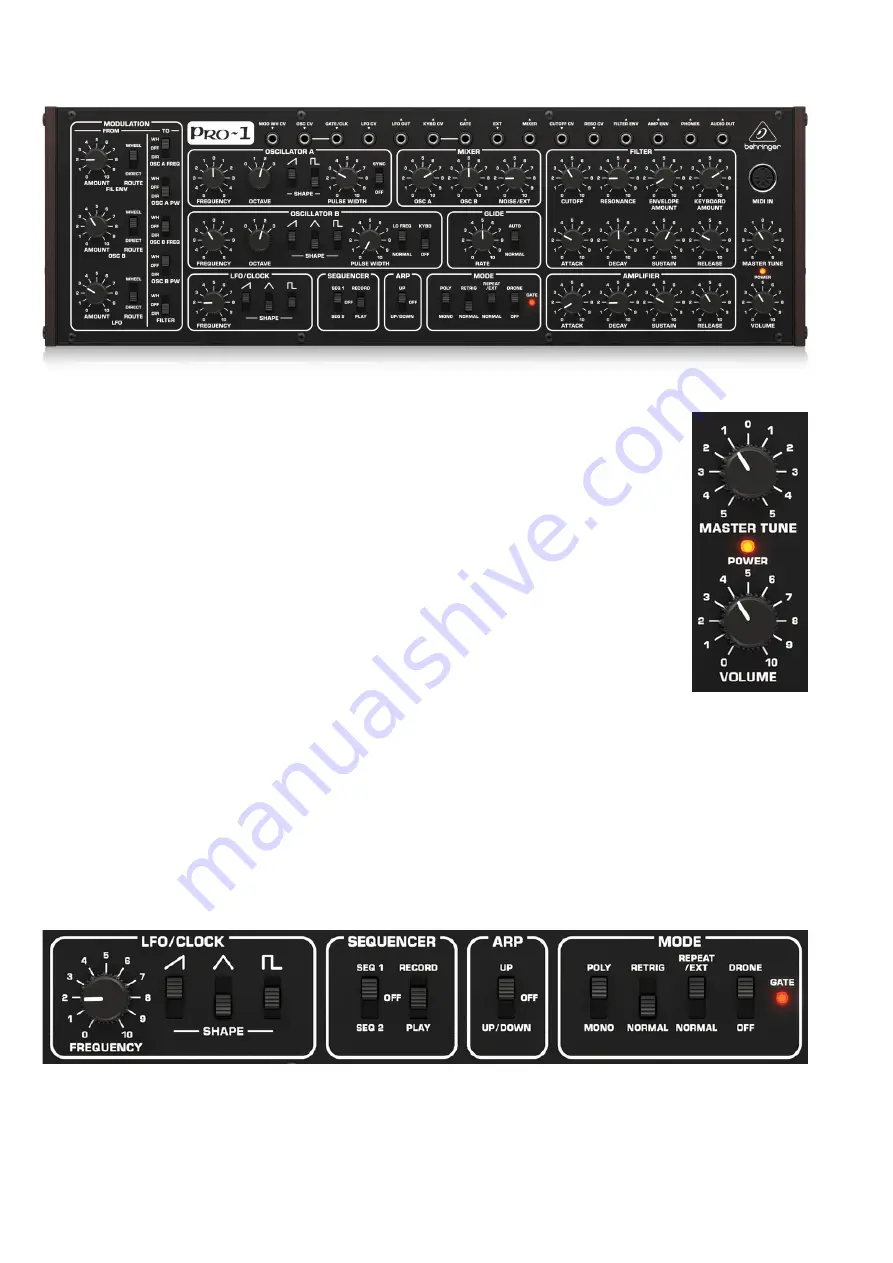
AP099
Revision 1.01
CM100B
expression through dynamic and timbral variations. Some MIDI keyboard
have these wheels, their effect will be the same as the original Pro-One.
The Pro-1 front panel differs with the addition of a MIDI IN socket and
synthesiser patch connections to allow connection between sections of the
synthesiser or other devices. There is also a POLY/MONO with in the MODE
section. Apart from that, the two synthesisers are identical on the top panel.
The diagrams don't indicate VOLUME and TUNE knob settings because these
are set as required. VOLUME, of course, sets the audio output level to the
amplifier or headphones. For optimum signal-to-noise ratio, the Pro- 1's
VOLUME knob should be set as high as possible (without overdriving your
amplifier or speakers, of course). MASTER TUNE simultaneously adjusts OSC
A and OSC B pitch over a four-semitone range. It is used to easily tune the
Pro- 1 to another instrument, such as a piano. Once set, MASTER TUNE is
not usually adjusted during performance. If no other instrument is in use, the
MASTER TUNE knob should be centred.
Other methods of controlling the Pro-1 are possible via the top panel. For more information,
see the top Panel section
.
Keyboard Controls
You can't play chords on a Pro-1 for the same reason you can't play chords on a clarinet or
trumpet: they are all monophonic instruments. So you will most often be playing solo lines on
the keyboard. But you have some options as to how the keys are played, and when you can
play more than one key. These are the keyboard controls, with which you can experiment on
almost any patch. The keyboard controls include the arpeggiator and sequencer, which are
Page of
8
34









































